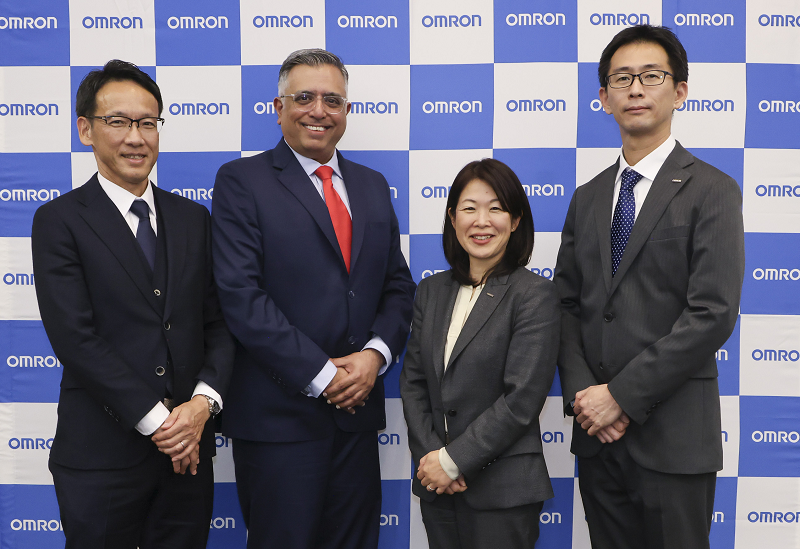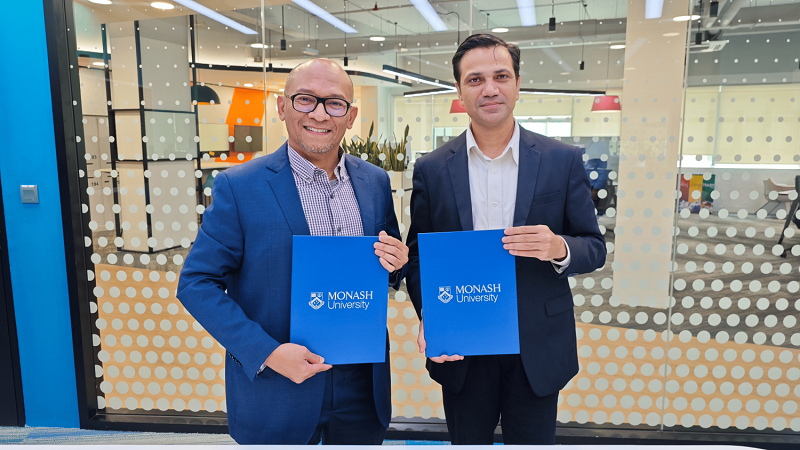Imagine seeing yourself in a full-length mirror and doing a once-over as though you were admiring a flower or a tall tree. Making no effort or judgement for a moment, you notice yourself positively— hey I’m part of nature—then move on.
Instinctually we know we can reduce stress by activating our five senses. We crave a good laugh when we need to release tension or the good smells of a meal with close friends or family. For relieving stress, it’s astoundingly effective just to taste the food, hear the surrounding sounds, really look at something like a cloud or a vividly colored fruit for 10 seconds or even touch our own arm because it lets our body do its thing to make sense of the moment.
Today however, when we’re feeling off and want to rebound but also keep up with demands, scrolling is where we land. It can feel like too much pressure to get up from the screen, even with burning eyes. Why is it hard to step away? Scrolling overrides our five senses, commandeering our attention away from our physical cues to essential behaviors for good health, like tasting the food we eat, eating when hungry, and going to sleep when tired and it’s been dark for hours.
There’s a reason we let tech take over our bodies: mental escape. Escape is an instinctive defensive behavior, from a neuroscience perspective, and plays its role. But escape is also a key part of the stress response (Evans et al 2020). Anything splitting our mind away from our body registers as a threat. That’s why scrolling feels like escape but doesn’t relieve stress.
Our senses tell us what to do to feel balanced—when we aren’t overriding them. This is not a novel idea as sensory tickling is part of cultural and some medical traditions (music, cooking with herbs, even laser therapy) and just might be the answer to transforming our physical experience of tech.
Tech’s Stress Paradox
We are animals made of soft tissues and water. The same parts of our bodies that evolved to help us adapt, like our exquisitely well innervated skin, are by design vulnerable to stress overload. Our body’s stress levels are on full display on our skin and in our moods. That is because our skin generates immediate signals to the central nervous system and launches both localized and systemic stress responses like inflammation to defeat stress that over time lead to auto-immune dysregulation (eczema, hair loss…) and disease (Arck et al 2006, Biazus Soares et al 2024).
What’s happening when we are stressed is that our bodies are shutting down regular maintenance by dialing down its energy flow (sending less oxygen and nutrition to our fingers, toes and organs)
and diverting that energy to fight or flee the threat. The trouble is, neither fighting or escaping solves today’s money/family/work pressures and crucial resources are misdirected and depleted.
What does it mean for our stress levels that AI has landed in technology we are using constantly, some of which we keep snug on our wrists, neck, or ears to keep data flowing? Tech prevalence + AI prevalence means our skin and tissues are absorbing more heat and radiation than ever before1. This year 283 EMF scientists from 45 nations published a warning that current limits to radio frequency radiation from our devices are not protecting human health. Our devices will exceed those levels because we are wearing more tech on our skin and carrier frequency increasing2. Some human tissues, like in our eyes, do not process heat effectively making vision more vulnerable to prolonged, increasing absorption, but radio frequency radiation emitted on the skin penetrates tissues and beyond 94 GHz causes inflammation, even burns (Kim et al 2024).
Truth is, even knowing more screen time is linked to severe muscle pain, headaches, job stress and bad sleep (n=2813, Tsou 2022), we want tech to solve its stress paradox for us.3 Given its physics, what could tech do differently to actually reduce stress?
Current State of Play: Stress Tracking + Mindfulness
Enter stress tracking by wearable devices and mindfulness apps, where leading firms are unicorns. Wearable devices (or wearables) are worn on specific body parts like the wrist, hand, neck or ears and are fitted with sensors that continuously measure physiological signals, like heart rate, temperature, and electric skin response that people wear to monitor their health, sleep and stress (Lu et al 2020).
Heart Rate Variability is the go-to metric employed by wearable tech for stress tracking currently (Gonzàlez Ramírez et al 2023). It’s not surprising that our hearts’ behaviors can reveal to us what we are thinking and how we feel (more important than the brain, said Aristotle). Wearables tap into this by measuring fluctuations in the length between beats and other measures then relating
those measurements back to an algorithm that messages users about how their bodies are coping with challenges (Kim et al 2018).
User reviews suggest that wearable stress tracking offers benefits and some drawbacks:
“The continuous tracking is good insofar that it flags apparent changes in your mood, but I can’t help but feel a watch that buzzes me all the time to ask how I’m feeling and if that feeling is stress is stressful.” Fitbit Sense 2 review, Tech Advisor 2022.
“My stress levels are a bit lower at the weekend, much lower when I sleep in my own bed, and I sleep lousy when I’m drunk. Both my Garmin stress score and heart rate are far higher when I’m hungover. The ‘move’ notification is a bit pointless. The problem is that it takes a lot of movement to clear it – like a 3-4 minute walk, so I now tend to just ignore it.” Garmin Vivoactive 3 stress tracker review, Trek Sumo 2025.
“I kept my ring on 24 hours a day the first month to log as much information as possible. I quickly learned that my sleep hygiene sucks. What else did I learn? No stimulants before bedtime, so I am currently blitzing through the Oura ring guided meditations instead.” Oura ring 3 review, Tom’s Guide 2022.
For most devices, stress alerts or daily scores arrive with a suggestion to be mindful (Wareable 2025, Digital Trends 2022, Tom’s Guide 2022). Guided breathing exercises are available on some Garmin watches (Wareable 2025). Some Oura subscribers have gained access to meditation exercises from Headspace, a meditation app (Oura 2023). Stress > breathe > meditate messaging is the current state of play.
Why meditate? More Americans are trying to meditate today, somewhere between 4.5% (Cramer et al 2016) and 14%, and mostly women (NCHS Data Brief 325 2018). Benefits are not immediate. Meditation is a skilled concentration practice with origins in eastern religions like Buddhism. It requires training to master. Stuck thoughts and experiences will come to attention, including painful ones, and about 10% of people who meditate say they experience adverse memories persistently (Goldberg et al 2021).
“Doing the work” is important, but it’s not exactly stress relief. Besides, there’s too much instability right now for most people to perfectly balance their inner and outer worlds with concentration. Feeling stressed means our bodies are trying to process a threat, and it will keep coming because stress is one of our body’s primary ways of responding to threats in the world around us. Tech so far adds a layer of actual physical stress that’s become inescapable, adding to stress stuck in our bodies and tilting us toward aging and chronic disease.
A Shift?
We know with confidence (thanks science) that wearable technology generates information that is encouraging people to take better care of themselves (good) but does not differentiate stress responses from other aspects affecting heart rate and heart rate variability (fair enough).
What we don’t yet know is whether or not stress is alleviated for wearables users. It appears not yet to have been looked into. Sifted through a meta-review, a large number of scholarly articles about stress detection by wearable technology described the aims (6259) and a small number (21) considered whether or not those aims are achieved, but none measured stress relief in users (González Ramírez et al 2023). The irresistibility power of the algorithm is strong, and the suggestive messages that subscribers receive from the algorithm during stress tracking were found to be capable of overriding people’s own thoughts (Van den Burg et al 2025).
The bottom line: Whether or not people use stress information generated by wearables to actually make changes, or disregard it, the current combination of ‘you’re stressed’ + ‘be mindful’ is lucrative:
“I didn’t know I wanted an Amazon jungle soundscape to send me to sleep until I had one“ said a reviewer trying the stress features of the Oura ring (Tom’s Guide 2022).
The leading wearables don’t sell subscriber’s data, but all of the majors offer their API and/or SDK integration to third-party firms (Oura, Garmin, Google Fitbit, Apple, Whoop) to create a brand ecosystem and expand their B2C and B2B reach. Already unicorns, their current stress detection services might well be good-enough for investors by promoting mental capture and keeping the solution in-house and the attention on the brand (more revenue and information control).
This is a barrier to immediate, real stress reduction for wearables users. Stress is additive and mental capture is a stressor that disrupts mind-body balance and builds heat (like a car running on low oil). Stress detection by wearable tech is a positive sign like stress management by Employee Assistance Programs, but current offerings don’t yet reckon with tech’s stress paradox. Our biological limits mean this will change necessarily. Human cognition is highly controlled by the physical activity of our nerves and fluids (Critchley and Harrison 2009) and the higher the stress load we carry the harder it is for our bodies to balance.
Urgent: A Breakthrough is Needed in How We Experience Tech
How we experience tech physically must change radically—away from conquering our minds and towards nurturing our bodies. Thanks to basic science and longevity science, this is in motion.
A world of opportunity for antidoting stress opens up by looking into the constant cross-talk among the body’s skin, gut, nerves and fluids where our five senses are powerful anti-stress agents
helping our bodies to detect and adapt to environmental challenges (Veiga-Fernandes and Mucida 2016, Tsakiris and Critchley 2016). Scientific discoveries at psycho-neuro-immuno labs in Germany, Japan, Sweden, and recently the USA4, are showing how our senses of taste, touch, smell and sight
are powerfully linked to motivational behavior and equally diminished by demotivational behaviour and immobility which depress our bodies along with our minds. Arousing our emotions and senses enhances memory encoding and facilitates recall (Critchley and Harrison 2009). That’s the challenge tech needs to solve.
Learning how different tastes, types of music and aromas affect us affords an incredible opportunity for a breakthrough in how we experience tech. That’s why at 5 Senses Lab we’re building a rich bank of empirically-proven techniques for balance and relieving stress using the five senses. It’s fun to learn and try productive ways of using our senses, like listening to Mozart while cooking with rosemary to gain mental clarity. It’s also a highly effective way to obtain real and immediate stress relief.
Developed by a stress scientist, the 5 Senses Bank is a repository of sensory actions known to (1) alleviate stress, (2) boost mental acuity, (3) restore balance, (4) reduce anxiety, (5) aid sleep, and (6) speed recovery. Each entry is empirically-proven, scientifically-sourced (linked), and categorized by effect and with care so that it may be applied in effective and pleasant experiences that are customizable, safe and accessible for everyone.
1 And the planet. Driven by AI use, the US economy is set to consume more electricity in 2030 for processing data than for manufacturing all energy-intensive goods combined, according to the International Energy Agency’s new analysis. 2 In May 2025 the Federal Trade Commission signaled its approval for the commercialization of increased connectivity to include the W band spectra up to 114 GHz. 3 This is either very generous of us or we’ve fully entered the Matrix, considering that scrolling is engaging because it redistributes power. Today’s tech titans have unmatched information control and hegemonic power to direct consumer interactions, and even legislation (Forbes 2024)—who also insist their heavily monetized simulation has no impact, for example on younger people (American Psychological Association 2024). Younger people carry a disproportionate stress burden (CDC National Health Statistics Report 213, 2024). 68% of 280,000 adolescents in 44 countries have high rates of stress and continuous screen time is the way young people are coping with declining peer and family support, with outcomes that include an inability to control usage, addiction behaviors, more youth depression and ADHD (World Health Organization 2024). Profiting from the creation of youth stress should be out of bounds.








